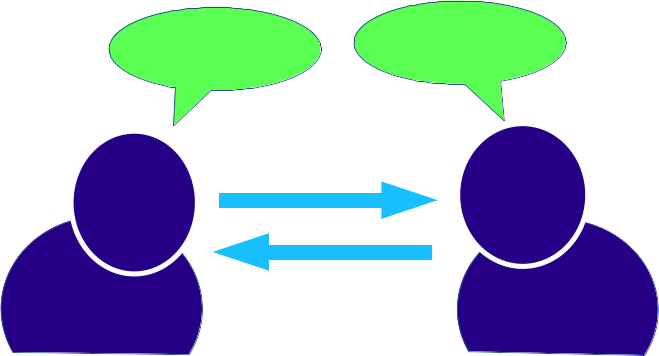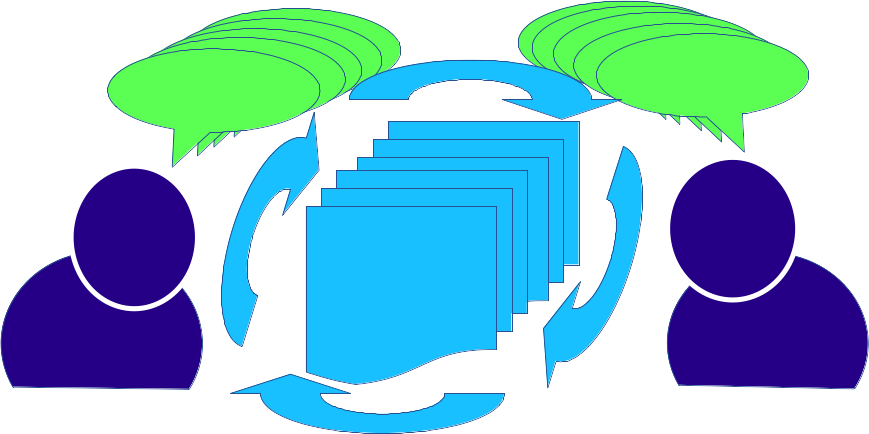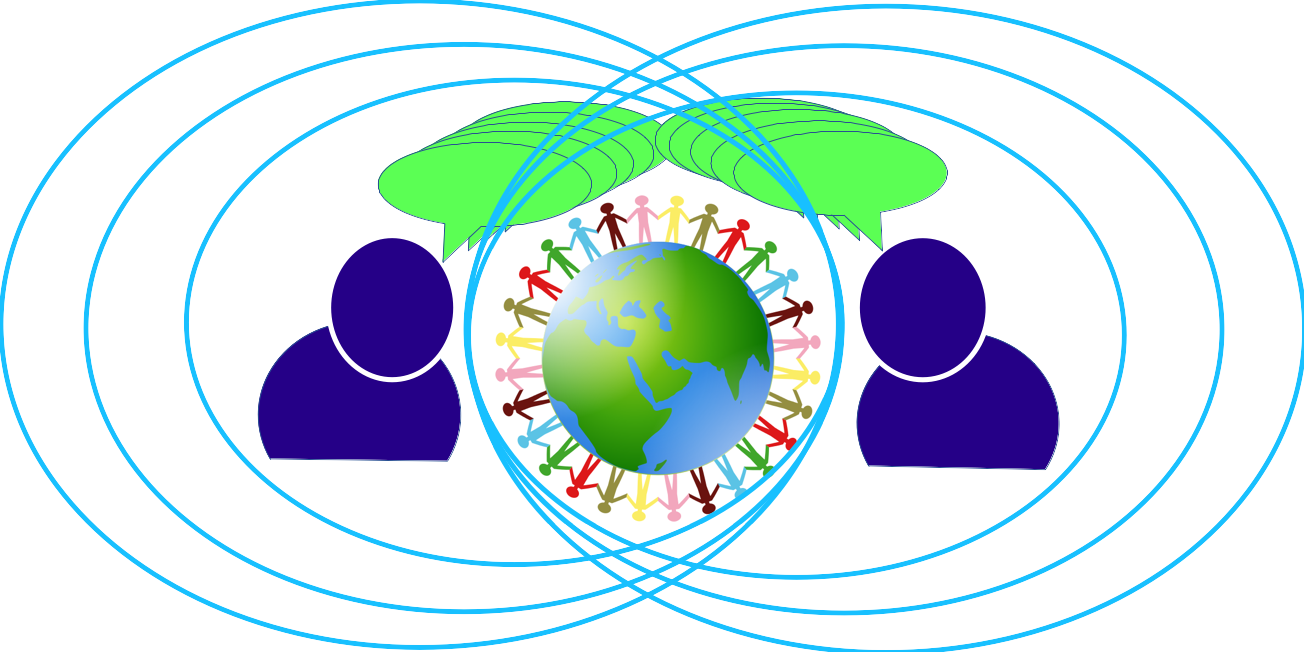Our Vision
by Sandra Collins, Gina Ko, and Yevgen Yasynskyy
Welcome to this open-source resource for counsellor educators and learners. This ebook provides both a conceptual and an applied practice foundation for centring the client–practitioner relationship in counselling. We optimize the use of multimedia resources (e.g., experiential learning activities, videos, comics, audio), alongside short, focused commentaries, to support both new and experienced counsellors to integrate and apply their learning.
A. Conceptual Overview
This ebook has been designed to disrupt how counsellors often think about the initial phases of the counselling process and the purpose, and use of, counselling microskills and techniques. We invite reconsideration of how counsellor educators position and teach counselling skills in support of culturally responsive, client-centred, and socially just counselling. We have written this ebook with graduate counselling students in mind, with the hope that it will also contribute to counselling and other healthcare practitioners and to the professions as a whole. We envision turning the traditional approach to counselling skills courses inside out by centralizing client–counsellor relationships.
Most counsellor education programs include a course on basic interpersonal communication that focuses on counselling microskills. A quick internet search of counselling microskills reveals a range of communication skills designed to (a) provide structure or organization to the client–counsellor conversation, (b) encourage the client to share information with the counsellor, (c) enhance the counsellor’s ability to listen effectively and make sense out of what the client is saying, and (d) communicate back to the client what they have heard in a way that enhances the client’s self-understanding. As Figure 1 suggests, many of the traditional communication skills models approached client–counsellor conversations as if they involved the passing of information back and forth between two individuals within the decontextualized microcosm of the counselling session. In this model, counselling microskills and techniques were treated as value-neutral and, at least to some degree, universal. The relationship between counsellor and client was also envisioned as more instrumental and contractual. Bordin (1979) positioned the working alliance as a foundation for therapeutic efficacy, highlighting three essential features: (a) agreement on counselling goals, (b) agreement on the tasks to support attainment of those goals, and (c) a bond of trust between counsellor and client. Many counselling skills courses in counsellor education programs in Canada were built upon these foundations (Jerry & Collins, 2005).
Figure 1
Linear Communication

With the emergent influence of counselling theories, such as narrative therapy (Freeman & Combs, 1996; White & Epston, 1990), that focus on meaning-making as a central function of the counselling processes, there was a shift in how communication between counsellor and client was conceptualized. These theoretical models were firmly embedded in the constructivist paradigm, which challenged the more linear, positivist view of communication and argued that meaning is co-constructed through a collaboration between counsellor and client. In other words, what emerged from the conversational exchange is something new (e.g., a deeper understanding of meaning and values, a greater appreciation for affect and sensations, a different lens on interpersonal interactions). Communication was reconceptualized as an active, generative, collaborative, and constructive process to which counsellor and client both contribute. Figure 2 attempts to illustrate this collaborative, co-constructive, fluid, creative, and iterative communication process. There was also a concurrent shift in the nature and importance of the client–counsellor relationship, which was strongly influenced by research into the common factors in therapeutic outcomes. Second only to client factors, relationship factors emerged as one of the most significant contributors to counselling success (Duncan, 2014; Feinstein et al., 2015), supporting the emphasis on the therapeutic relationship in other counselling models (e.g., feminist therapy, relational-cultural therapy) (Brown, 2010; Enns et al., 2012; Jordan, 2010).
Figure 2
Co-Constructive Conversation

Although the client–counsellor relationship shifted to the foreground, many counselling skills courses continued to prioritize counselling microskills and techniques over relationship factors. Connections between these mechanisms of communication and some of what Rogers (1961) had first asserted to be core conditions for therapeutic change (e.g., empathy, congruence, unconditional positive regard) provided an anchoring point for the counsellor’s use of counselling microskills and the significance of relational factors in counselling outcomes (Duncan, 2014; Feinstein et al., 2015). The multicultural counselling movement that began in the early 1990s with an emphasis on ethnic diversity (Arredondo et al., 1996; Sue et al., 1992), grew to embrace a broader definition of culture (Collins, 2018b; Ratts et al., 2016), and added the lens of both counsellor and client personal cultural identities to the understanding of interpersonal communication. The client and counsellor were both acknowledged as complex cultural beings, whose contributions to the shared processes of meaning-making in Figure 2 are deeply embedded in both counsellor and client worldviews, values, and views of health and healing (Collins, 2018a, Paré, 2013). In most of the literature, a cultural context was placed around conversations about counselling skills, techniques, and relational practices. There was a shift in appreciation of the nature and role of the therapeutic relationship as inextricably intertwined with effective communication across cultural contexts.
More recently, the social justice counselling movement in Canada (Audet & Paré, 2018; Collins, 2018b; Ginsberg & Sinacore, 2015) and its repurposing of ecological systems theory (Bronfenbrenner, 1979, 1989) have expanded understanding of the multilayered influences on the counselling relationship and client–counsellor conversations. Figure 3 is intended to illustrate the ways in which the contexts of each person’s lived experiences, at the microlevel (i.e., individuals, couples, or families), mesolevel (i.e., schools, organizations, or communities), and macrolevel (i.e., broader social, economic, and political systems), become an integral part of the client–counsellor interaction (Collins, 2018a). By widening the lens through which we view this interaction, counselling microskills and techniques fade into the background and become supporting actors in the dynamic, contextualized, and fluid relationship between counsellor and client. Engaging these broader contexts makes more transparent the necessity of just relational practices and values-based discourses (Audet & Paré, 2018; Paré, 2013).
Figure 3
Contextualized, Relational, Growth-Fostering Communication

Centring the client–counsellor relationship in counselling raises the question of what makes for a therapeutic or growth-fostering relationship that has the potential to support positive outcomes in counselling. There is a recent body of literature on evidenced-based relationships (Norcross & Wampold, 2018) that builds on the earlier common factors research, and foregrounds relational responsivity. This research and the historical trends noted above raised a question for us that forms the foundation for this ebook: In what ways can the relational practices of the counsellor and the nature of the therapeutic relationships shift, adapt, or be altered altogether in response to the specific cultural identities, contexts, values, worldviews, and needs of each individual client? We will attempt to answer this question by systematically examining (a) the conceptual and theoretical influences on client–counsellor relationships; (b) the ways in which counselling processes support, and are supported by, client-centred and culture-centred relationships; (c) the use of specific counselling microskills and techniques to undergird relational practices and intentions; and (d) the importance of reflective practice in enhancing relationship building with all clients.
By stepping back and looking at the client–counsellor relationship through the lenses of cultural responsivity and socially just practice (Collins, 2018c; Audet & Paré, 2018; Paré, 2013), we challenge the embeddedness of counselling practices and processes in the eurocentric, individualist worldview. We critique and replace some of the language that is often used in counselling that does not fully support client-centred, contextualized, responsive relationships and practices. Our goal is to equip you with the confidence, tools, and experience that will enable you to optimize the growth-fostering potential of the client–counsellor relationship. We invite appreciation of the interplay of client and counsellor cultural identities and social locations on how you conceptualize and contextual client challenges. We encourage you to support clients’ self-determined and culturally-defined visions for change by nurturing collaboration with clients at all points in the counselling process.
B. Challenging our Assumptions
Many of you come with experience in various helping roles; you may also bring previous counselling skills training. We invite you to suspend, as much as possible, any tendency to foreclose on the ideas and applied practices presented in this resource. To a large degree, we may provide a refinement of what you already know. However, we also aim to deconstruct, disrupt, and dismantle certain approaches to relating that may be less helpful to many clients.
Through many years of teaching, research, and practice in counselling, we have learned new things from each other, from those with whom we collaborate, and from the literature we have reviewed, all of which have contributed to this ebook. Some of the evolution in our own thinking has been outlined here in the introduction as a context for what is to come. In creating this resource, we have frequently had to stop and rethink some of our own assumptions, language, and practices. We have been very deliberate also to highlight diverse perspectives and lived experiences through the voices of other contributors to the conceptual and applied practice elements. We are grateful for the opportunity to write this ebook, because of the transformation it has generated in us. Your journey will likely differ from ours, but we invite you to embrace the direction this resource leads you in with openness and curiosity.
We have not set out to write a textbook on multicultural counselling or counselling skills. We will anchor the relational practices, counselling processes, microskills and techniques, and reflective practices we introduce in the theoretical and research literature. However, this is primarily intended as a practical guide for counsellors. The learning processes focus not only on what to do in counselling, but how to do it! We have included video, audio, and other multimedia formats to enhance your learning and to bring the concepts and applied practices to life. We have also encouraged our colleagues to contribute reflections on their own lived experiences and work with their clients to ground the elements we introduce in real-life, applied practice examples wherever possible.
What excites us about this ebook!
In the video below Gina, Sandra, and Yevgen share their vision for this ebook, which they hope will support counsellors and other healthcare practitioners to co-create safer and more culturally responsive relational spaces with all clients.
© Gina Ko, Sandra Collins, & Yevgen Yasynskyy (2023, June 14)
Assumptions about our audience
We have introduced a variety of voices throughout this ebook, through the rich contributions of colleagues from diverse cultural communities who work with a broad spectrum of clients. It is our hope that, in doing so, each person who reads this ebook sees themselves reflected in the stories and perspectives that arise through those contextualized voices. We assume that the audience of learners who will access this resource are equally diverse. In keeping with Collins (2018), we embrace an inclusive definition of cultural identities defined by age, ability, Indigeneity, ethnicity, social class, gender, gender identity, sexual orientation, religion, and spirituality.
As the reader, we invite your active awareness of the relative positioning of counsellors and clients on the continuum of privilege–marginalization (Ratts et al., 2015), as well as the interplay of your own cultural identities and social locations with the voices of the authors and contributors. It is our hope to create a culturally inclusive and broadly applicable resource for all counsellors, while at the same time foregrounding voices that continue to be marginalized in counselling and psychology.
C. A Collaborative and Open-Source Project
This is an open-source guide, and you are strongly encouraged to link to, copy, and repurpose portions of this resource within the boundaries of the Attribution-NonCommercial-ShareAlike Creative Commons license. However, you may not reproduce any of it for commercial purposes. The one exception is its use in teaching and training activities (e.g., college and university courses, conference presentations, workplace training) that are not published as stand-alone, for-profit works.
Each contributor to this ebook maintains copyright over their own work, even if it is made available through the YouTube channel of one of the ebook editors. The content from each contributor is placed in text boxes within the chapters to make authorship (and copyright) transparent. You must cite the author of the particular commentary, activity, audio, or video you use.
For example, you might include the following attribution to Allison Reeves if you use her video in a course you are teaching. In this case please provide the title of the learning activity itself and include the link to Allison’s contribution, as listed on the Ebook Contributor’s page.
Note. From Culturally safe practice, by A. Reeves, in “A practical guide for counsellors: Co-creating safe and culturally responsive relational spaces,” by G. Ko, S. Collins, and Y. Yasynskyy (Eds.), 2023, ColYasKo (https://pressbooks.pub/responsiverelationships/chapter/client_identities/#reeves1). Copyright 2023 by A. Reeves, CC BY-NC-SA 4.0.
To list Allison’s contribution in your reference list, we suggest the first format below. However, if you draw on content from the entire chapter to which Allison made a contribution, please use the second format.
Reeves, A. (2023). Culturally safe practice. In G. Ko, S. Collins, and Y. Yasynskyy (Eds.), A practical guide for counsellors: Co-creating safe and culturally responsive relational spaces, ColYasKo. https://pressbooks.pub/responsiverelationships/chapter/client_identities/#reeves1.
Ko, G., Collins, S., Yasynskyy, Y., Yohani, S., Berwald, E., MacDonald, H., & Reeves, A. (2023). Conceptualizing client lived experiences: Client worldviews. In G. Ko, S. Collins, and Y. Yasynskyy (Eds.), A practical guide for counsellors: Co-creating safe and culturally responsive relational spaces, ColYasKo. https://pressbooks.pub/responsiverelationships/chapter/client_identities/
The ebook authors/editors move between their individual voices (for which the attribution above should be used) and their collaborative voice. If there is no clear attribution to one of the ebook editors in the section you are reading or the video you are watching, you can assume that the editors are using their collaborative voice, in which case copyright should be attributed to them, based on the chapter authorship list. To reference the content in this section, for example, please use the formats below. For other chapters, please use the full list of chapter authors.
Note. Adapted from “A practical guide for counsellors: Co-creating safe and culturally responsive relational spaces,” by G. Ko, S. Collins, and Y. Yasynskyy (Eds.), 2023, ColYasKo (https://responsiverelationships.pressbooks.com). Copyright 2023 by S. Collins, G. Ko, and Y. Yasynskyy, CC BY-NC-SA 4.0.
Collins, S., Ko, G., & Yasynskyy, Y. (2023). Our Vision. In G. Ko, S. Collins, and Y. Yasynskyy (Eds.). A practical guide for counsellors: Co-creating safe and culturally responsive relational spaces. ColYasKo. https://responsiverelationships.pressbooks.com
References
Arredondo, P., Toporek, R., Brown, S., Jones, J., Locke, D. C., Sanchez, J., & Stadler, H. (1996). Operationalization of the multicultural counseling competencies. Journal of Multicultural Counseling and Development, 24(1), 42–78. https://doi.org/10.1002/j.2161-1912.1996.tb00288.x
Audet, C., & Paré, D. (Eds.). (2018). Social justice and counseling: Discourses in practice. Routledge.
Bronfenbrenner, U. (1979). Contexts of child rearing: Problems and prospects. American Psychologist, 34(10), 844–850. https://doi.org/10.1037/0003-066X.34.10.844
Bronfenbrenner, U. (1989). Ecological systems theory. In R. Vasta (Ed.), Six theories of child development: Revised formulations and current issues (pp. 185–246). JAI Press.
Brown, L. S. (2010). Feminist therapy. American Psychological Association.
Collins, S. (2018a). Collaborative case conceptualization: Applying a contextualized, systemic lens. In S. Collins (Ed.), Embracing cultural responsivity and social justice: Re-shaping professional identity in counselling psychology (pp. 556–622). Counselling Concepts. https://counsellingconcepts.ca/
Collins, S. (2018b). Culturally responsive and socially just (CRSJ) counselling: Principles and practices. In S. Collins (Ed.), Embracing cultural responsivity and social justice: Re-shaping professional identity in counselling psychology (pp. 2–20). Counselling Concepts. https://counsellingconcepts.ca/
Collins, S. (2018c). Culturally responsive and socially just relational practices: Facilitating transformation through connection. In S. Collins (Ed.), Embracing cultural responsivity and social justice: Re-shaping professional identity in counselling psychology (pp. 441–505). Counselling Concepts. https://counsellingconcepts.ca/
Duncan, B. L. (2014). On becoming a better therapist: Evidence-based practice one client at a time (2nd ed.). American Psychological Association. https://doi.org/10.1037/14392-001
Enns C. Z., Williams, E. N., & Fassinger, R. E. (2012). Feminist multicultural psychology: Evolution, change, and challenge. In E. N. Williams & C. Z. Enns (Eds.). The Oxford handbook of feminist multicultural counseling psychology (pp. 3–23). Oxford Handbooks Online. https://doi.org/10.1093/oxfordhb/9780199744220.013.0001
Feinstein, R., Heiman, N., & Yager, J. (2015). Common factors affecting psychotherapy outcomes: Some implications for teaching psychotherapy. Journal of Psychiatric Practice, 21(3), 180–189. https://doi.org/10.1097/PRA.0000000000000064
Freedman, J., & Combs, G. (1996). Narrative therapy: The social construction of preferred realities. W. W. Norton.
Ginsberg, F., & Sinacore, A. L. (2015). Articulating a social justice agenda for Canadian counselling and counselling psychology. In A. Sinacore & F. Ginsberg (Eds.), Canadian counselling and counselling psychology in the 21st century (pp. 254–272). McGill-Queens University Press.
Jerry, P., & Collins, S. (2005). Web-based education in the human services: Use of web-based video clips in counselling skills training. Journal of Technology in Human Services, 23(3–4), 183–199. https://doi.org/10.1300/J017v23n03_02
Jordan, J. V. (2010). Relational-cultural therapy. American Psychological Association.
Norcross, J. C., & Wampold, B. E. (2018). A new therapy for each patient: Evidence-based relationships and responsiveness. Journal of Clinical Psychology, 74(11), 1889-1906. https://doi.org/10.1002/jclp.22678
Paré, D. A. (2013). The practice of collaborative counseling & psychotherapy: Developing skills in culturally mindful helping. Sage.
Ratts, M. J., Singh, A. A., Nassar-McMillan, S., Butler, S. K., & McCullough, J. R. (2016). Multicultural and social justice counseling competencies: Guidelines for the counseling profession. Journal of Multicultural Counseling and Development, 44(1), 28–48. https://doi.org/10.1002/jmcd.12035
Rogers, C. R. (1961). On Becoming a Person: A therapist’s view of psychotherapy. Houghton Mifflin.
Sue, D. W., Arredondo, P., & McDavis, R. J. (1992). Multicultural counseling competencies and standards: A call to the profession. Journal of Counseling & Development, 70(4), 477–486. https://doi.org/10.1002/j.1556-6676.1992.tb01642.x
White, M., & Epston, D. (1990). Narrative means to therapeutic ends. W. W. Norton.
